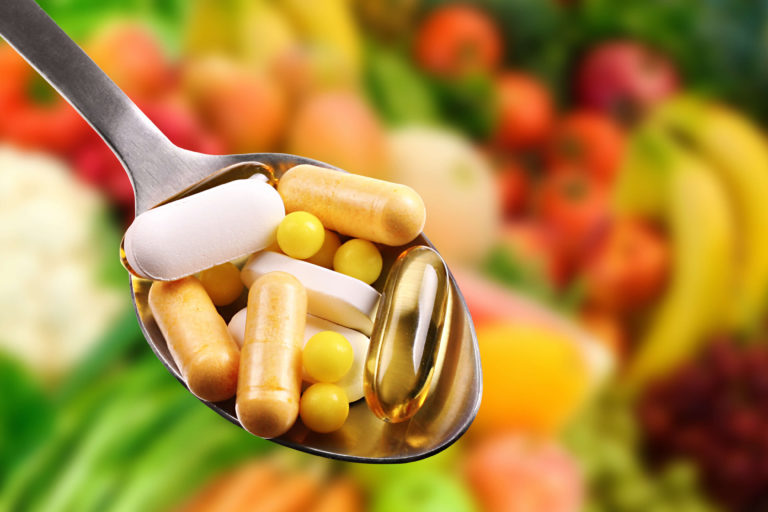3 Problems in Estrogen Dominance.
For the last few weeks, we’ve focused on estrogen dominance and its common problems. These include heavy periods, breast tenderness, weight gain, insomnia, anxiety, and fatigue, to name a few.
But what about the less well-known conditions it contributes to? This week’s post shines a light on three problems resulting from or becoming worse by estrogen dominance.
Estrogen Dominance and Histamine Intolerance
Headaches. Anxiety. Insomnia. Brain fog. Hives. Nasal congestion. These are just a few of the symptoms of mast cell activation or high histamine.
Histamine symptoms are more common in women and often track with the menstrual cycle, occurring when estrogen is high at ovulation and then again just before the period.
What is Histamine?
Histamine is the immune signaling protein that causes allergies and swelling. But it has lots of other jobs. Histamine also regulates stomach acid, stimulates the brain, and plays a key role in ovulation and female reproduction. Finally, histamine boosts libido, which is why estrogen increases libido and antihistamines decrease it.
Here’s what happens:
Estrogen stimulates mast cells to release histamine and down-regulates the DAO enzyme that clears histamine. At the same time, histamine stimulates the ovaries to make more estrogen. The net result can be a vicious cycle of estrogen → histamine → estrogen → histamine.
Progesterone stabilizes mast cells, up-regulates DAO, and can therefore reduce histamine levels.
Many symptoms of ‘estrogen dominance’ are actually symptoms of histamine or mast cell activation. For example, mast cells and histamine play a role in endometriosis and premenstrual dysphoric disorder (PMDD).
Regulation of histamine happens by clearing it with the enzymes histamine N-methyltransferase (HNMT) and diamine oxidase (DAO). It’s a fine balance between “histamine in” and “histamine out.” Genetic variants, diet, hormone imbalances, or nutrient deficiencies can cause this balance to go awry.
What’s the Solution?
Avoid histamine-stimulating foods such as alcohol and dairy. Reduce histamine-containing foods. This is the fastest and simplest way to feel better, but it can become restrictive and difficult in the long term. If you address underlying gut issues, you should find that you improve your tolerance of histamine foods.
Histamine-containing foods include:
- red wine and champagne
- hard cheese
- avocado
- smoked or canned fish
- shellfish
- soy sauce
- deli meats
- yeast
- bananas
- dried fruit
- dried nuts
- bone broth and fish stock
- vinegar and fermented foods such as sauerkraut
- chocolate
How to regulate your histamine levels:
- Improve gut health. This usually means identifying and correcting dysbiosis and small intestinal bacterial overgrowth (SIBO). A GI Map test will help identify microbial imbalances.
- Supplement Vitamin B6 because it upregulates DAO. This is one reason Vitamin B6 is so beneficial for PMS. B6 also boosts the calming neurotransmitter GABA. Food sources of Vitamin B6 include meat, chicken, and sunflower seeds.
- Keep your estrogen clearance pathways healthy. You can read more about that here.
- Consider using natural progesterone because it up-regulates the DAO enzyme.
Estrogen Dominance and Candida Overgrowth
Candida albicans is a fungus that we normally carry in our bodies. If your immune and digestive systems are healthy, these strains are kept under control and don’t wreak havoc on your health. However, when the conditions are favorable, these opportunistic microorganisms like to party in big numbers and overgrow.
Some signs of Candida overgrowth include: constantly craving sugar or carbohydrates; bloating/flatulence; stomach cramps; acid reflux; hives; acne; bad breath; white coating on mouth cracks at the corners of the mouth; chronic fatigue/exhaustion; insomnia; brain fogginess; aches; dizziness; body odor; constant colds; sensitivity to smells such as chemicals and perfumes; erratic periods; recurring vaginal discharge; itching; stinging or thrush infections; recurring cystitis (bladder infections); or urinary infections.
This overgrowth can occur in the skin, digestive tract, mouth, and vagina. Candida can also help other unhealthy bacteria and parasites take hold and thrive in your body. This, in turn, can create systemic infections, endocrine disruption, and many other health issues.
The Link Between Candida and Estradiol
Studies have shown that when candida and estradiol are combined in the lab, candida grows and survives even at high temperatures. The presence of estrogen also contributes to drug resistance in candida.
In addition to the issues with overgrowth, there is also evidence that candida can bind to estrogen and prevent it from being taken up by estrogen receptors. Therefore, women who take progesterone to deal with hormonal issues may not feel better. In fact, many integrative practitioners believe that a negative reaction to progesterone cream is a sign of candida issues.
The antidotes to this problem are to balance estrogen and progesterone and to manage stress to keep the immune system working well. If you suspect you suffer from chronic yeast issues, it is important to treat both candida and hormonal imbalance simultaneously.
Estrogen Dominance and Hypothyroidism
Hypothyroidism (low thyroid function) affects women 7 times more frequently than men. The epidemic of estrogen dominance among women is at least partly to blame.
Here’s what happens:
Excess estrogen levels cause the liver to produce high levels of thyroid-binding globulin (TBG), which binds thyroid hormone and decreases the amount of thyroid hormone available to the body.
Women with estrogen dominance may have a normally functioning thyroid gland and adequate thyroid hormone levels; however, the thyroid hormone gets gobbled up by TBG.
High estrogen also blocks the conversion of T4 to T3, the active form of thyroid hormone. These 2 mechanisms result in hypothyroid symptoms of fatigue, brain fog, hair loss, weight gain, low libido, low mood, constipation, and irregular menstrual cycles. In fact, the symptoms of estrogen dominance and low thyroid levels often mirror each other.
On the flip side of this situation, we have a worsening of estrogen dominance in hypothyroidism. The liver must first break down estrogen in Phase 1 to be excreted by the body. Sluggish thyroid=sluggish everything, including Phase 1 of detox. As a result, hypothyroidism slows this elimination pathway and results in a buildup of estrogen. You can read more about that here. This can result in an increased risk of breast cancer, uterine fibroids, and ovarian cysts.
What to do for thyroid issues:
If you believe you are experiencing ED-related thyroid issues, have your provider check a FULL thyroid panel or order your own here. A full panel includes TSH, free T3, free T4, reverse T3, TPO, and thyroglobulin antibodies.
In Conclusion
 Estrogen dominance can be challenging to deal with, especially if you begin getting symptoms that don’t really add up to garden-variety ED. Therefore, be aware of unexpected problems caused or worsened by estrogen overload so you and your provider can take steps to lower estrogen levels and help you get your mojo back!
Estrogen dominance can be challenging to deal with, especially if you begin getting symptoms that don’t really add up to garden-variety ED. Therefore, be aware of unexpected problems caused or worsened by estrogen overload so you and your provider can take steps to lower estrogen levels and help you get your mojo back!
Dr. Anna Garrett is a menopause expert and Doctor of Pharmacy. She helps women who are struggling with symptoms of perimenopause and menopause find natural hormone balancing solutions so they can rock their mojo through midlife and beyond. Dr. Anna is the author of Perimenopause: The Savvy Sister’s Guide to Hormone Harmony. Order your copy at www.perimenopausebook.com.
Dr. Anna is available for 1-1 consultation. Find out more at www.drannagarrett.com/lets-talk





